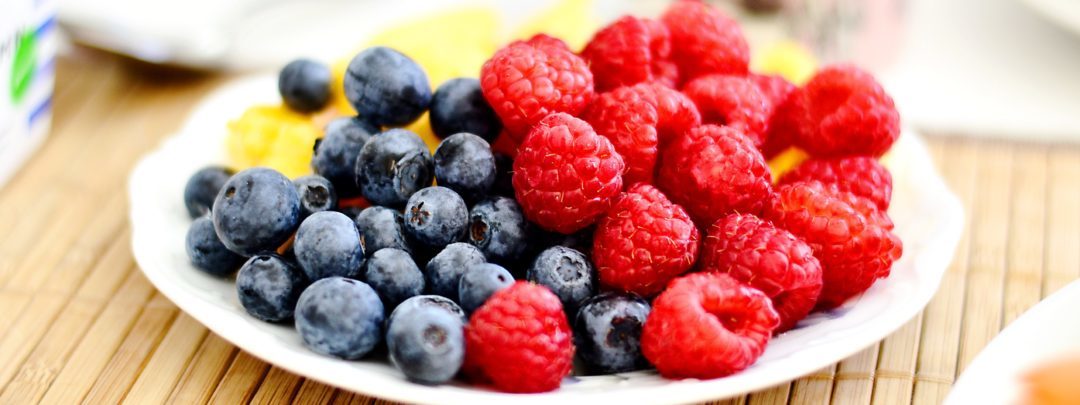
Your food choices throughout the week have a big impact on your health, energy levels, mood, body composition and so much more. With March being National Nutrition Month, it’s the perfect time of year to check in with your eating habits and make sure they’re supporting your goals!
When it comes to nutrition, there is a seemingly endless supply of information available, often offering contradictory advice. For those ready to start eating healthier, it can feel confusing to sort out fact from fiction. But before you sign on to the latest fad diet or trend, consider this:
Short-term diets typically mean short-term results.
No matter what your goal is — training for a marathon, losing weight, managing blood pressure or cholesterol – the key to your success is developing habits you can maintain long-term. Any plan that completely eliminates a food group or category of food is a red flag, because you’re not realistically going to continue eating that way forever. If a diet sounds too good to be true… it probably is!
There is no one size fits all approach to healthy eating.
We each have unique needs, preferences, goals and lifestyles and the best nutrition plan for you is one that reflects your needs and preferences, supports your goals, and fits into your lifestyle. That said, if you’re looking to improve your nutrition, here are a few simple guidelines to get you started:
Focus on Fiber:
Fiber-rich fruits and veggies are naturally filling, low in calories and packed with nutrients, so they’re a great way to add volume (and nutrient density) to your diet while keeping calories in check. By increasing fiber, you’ll feel fuller longer, which may help you eat less overall. In addition to weight management, foods that naturally contain fiber help lower cholesterol, stabilize blood sugar levels, promote healthy digestion and keep you regular. Aim for at least two servings of fresh fruit per day, and fill half your plate with veggies and/or salad at lunch and dinner. If you’re new to fiber, start gradually, and make sure to drink plenty of fluids to keep things moving. This is a small but impactful change that will benefit both your health and your waistline.
Fiber-Filling Options
- Whole grains, such as oats, brown rice, farro, quinoa, and whole wheat bread and pasta contain more fiber than their refined counterparts.
- Bean and legumes are excellent, and inexpensive, sources of fiber as well as plant-based protein.
Power up with Protein:
While carbohydrates provide quick energy, protein takes longer to digest, helping you stay satisfied and feel energized for longer. Protein also provides the building blocks for all the organs and tissues in our body- including muscle. For that reason, it plays a key role in recovery after exercise and helps maintain the lean muscle mass that keeps metabolism revved. To optimize muscle growth and keep hunger at bay, spread your protein intake throughout the day, and aim to include a good source at all your meals and snacks.
Plan Your Meals with Protein
- Eggs, skinless chicken, turkey, fish, seafood, low-fat dairy like Greek yogurt and cottage cheese, and lean red meat like beef and pork.
- Incorporate plant-based sources like tofu, beans, legumes, nuts and seeds for more nutritional diversity and less saturated fat.
Vary Your Veggies:
When it comes to healthy eating habits, vegetables are paramount. High in fiber and water, veggies are naturally low in calories and packed with nutrients. The different colors in vegetables (and fruit) each offer unique health benefits. The best way to reap the health benefits of vegetables is to eat the rainbow (and no, we are not talking about Skittles!) Aim to incorporate a variety of colorful produce into your diet each week.
- Red produce such as tomatoes, watermelon and bell peppers contain lycopene, which protects your heart and is associated with reduced risk for prostate cancer.
- The orange pigment, beta-carotene, found in carrots, sweet potatoes and pumpkins supports vision and immunity.
- Dark leafy greens such as spinach, kale and broccoli provide vitamin K and calcium for strong bones, and also contain plant-based iron.
- Anthocyanins, the blue/purple compound found in blueberries, blackberries and plums, are powerful antioxidants, protecting cells from damage, lowering cancer risk, and supporting exercise recovery.
Vegetable Variations
- Roast cauliflower, broccoli, asparagus or Brussels sprouts to bring out the natural sweetness
- Make veggie kebobs by grilling bell peppers, zucchini, mushrooms and onions on skewers
- Sautee spinach with olive oil and garlic
- Make a stir fry with bok choy, water chestnuts, carrots and string beans
- Dip raw carrots, cucumber, bell peppers and cucumbers in hummus or a Greek-yogurt based dip
- Toss baby spinach or kale into a smoothie
- Add zucchini to your oatmeal or baked goods
- Layer arugula or baby romaine into a wrap or sandwich
- Throw diced peppers, onions, tomatoes and mushrooms into an omelet or scrambled eggs
Creating sustainable healthy eating habits is a marathon, not a sprint- and everyone’s journey is different. For more individualized support, consider meeting with a registered dietitian nutritionist.

Alissa Palladino, MS, RDN, LD, ACSM-CPT
Alissa is a Registered Dietitian at Good Measure Meals where she helps people achieve and maintain their health goals. A veggie lover and avid runner with a number of half and full marathons under her belt, she believes the best form of exercise is the one you enjoy and the best nutrition plan is one that fits into your lifestyle.
Published: March 2018



